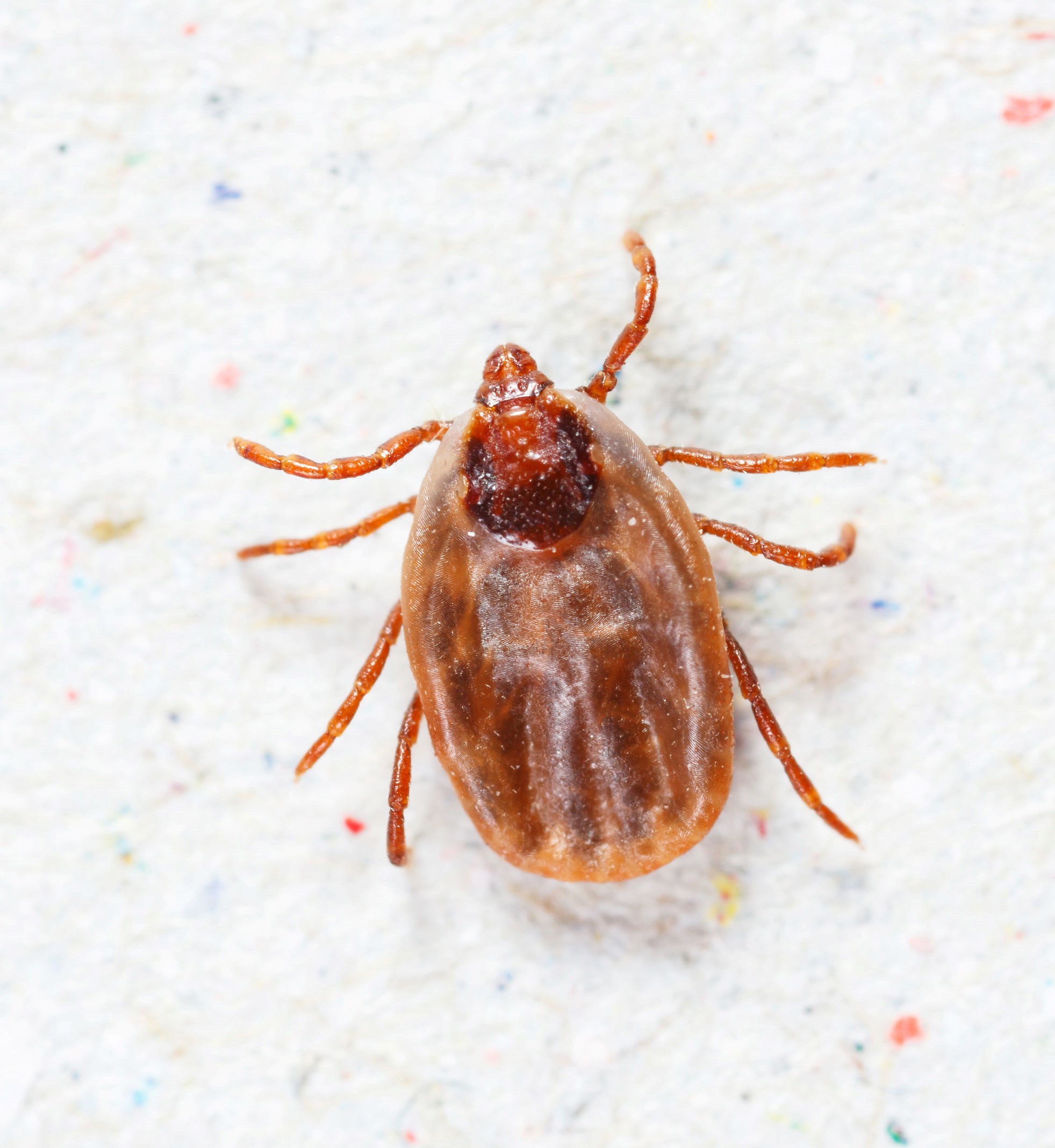

The biological and reproductive parameters of the ticks were not affected by the repellents. The compounds did not interfere with the distribution of the ticks on the body of the dogs, as a similar percentage of ticks was found on the anterior half of the dogs (54.5% for the control group and 56.2% for the treated group). For larvae and nymphs, a decrease in tick infestation was observed at the fifth count, and for adults, lower average counts were observed in all counts. The mean tick infestation in the treated group was significantly lower than in the control group. The counts on the number of tick stages found per dog were individually fitted to linear mixed effects models with repeated measures and normal distribution for errors. Five environmental infestations were performed, with the number of ticks (at all stages) on the dogs being counted twice a day for 45days. The treated group received collars with slow-release formulations of the compounds attached, while the control group received collars with clean formulations attached. Twelve dogs were randomly assigned to two groups with six dogs each. We report the use of prototype slow-release formulations of these compounds to reduce the burden of R. Beagles are less susceptible to tick infestations than English cocker spaniels due to enhanced production of 2-hexanone and benzaldehyde that act as volatile tick repellents.

Electronic address: dog breeds are hosts for the brown dog tick, Rhipicephalus sanguineus sensu lato, but infestation levels vary among breeds. Universidade Federal de Goiás, Rua 235s/n, Setor Universitário, CEP: 74605050, Goiânia, Goiás, Brazil. Electronic address: 8 Instituto de Patologia Tropical e Saúde Pública. Livestock Insects Research Laboratory and Veterinary Pest Genomics Center, 2700 Fredericksburg Road, Kerrville, TX, 78028, USA. Electronic address: 7 USDA, ARS, Knipling-Bushland U.S. Electronic address: 6 EMBRAPA Arroz e Feijão, Rodovia GO-462, Km 12, Zona Rural, Caixa Postal: 179, CEP: 75375-000, Santo Antônio de Goiás, Goiás, Brazil. Electronic address: 5 Biological Chemistry and Crop Protection Department, Rothamsted Research, West Common, Harpenden, Hertfordshire, AL5 2JQ, United Kingdom. Electronic address: 4 Biological Chemistry and Crop Protection Department, Rothamsted Research, West Common, Harpenden, Hertfordshire, AL5 2JQ, United Kingdom. Electronic address: 3 Biological Chemistry and Crop Protection Department, Rothamsted Research, West Common, Harpenden, Hertfordshire, AL5 2JQ, United Kingdom. Campus Samambaia, Avenida Esperança, s/n, Campus Universitário, CEP: 74690-900, Goiânia, Goiás, Brazil. Electronic address: 2 Escola de Veterinária e Zootecnia, Universidade Federal de Goiás. 1 Escola de Veterinária e Zootecnia, Universidade Federal de Goiás.



 0 kommentar(er)
0 kommentar(er)
